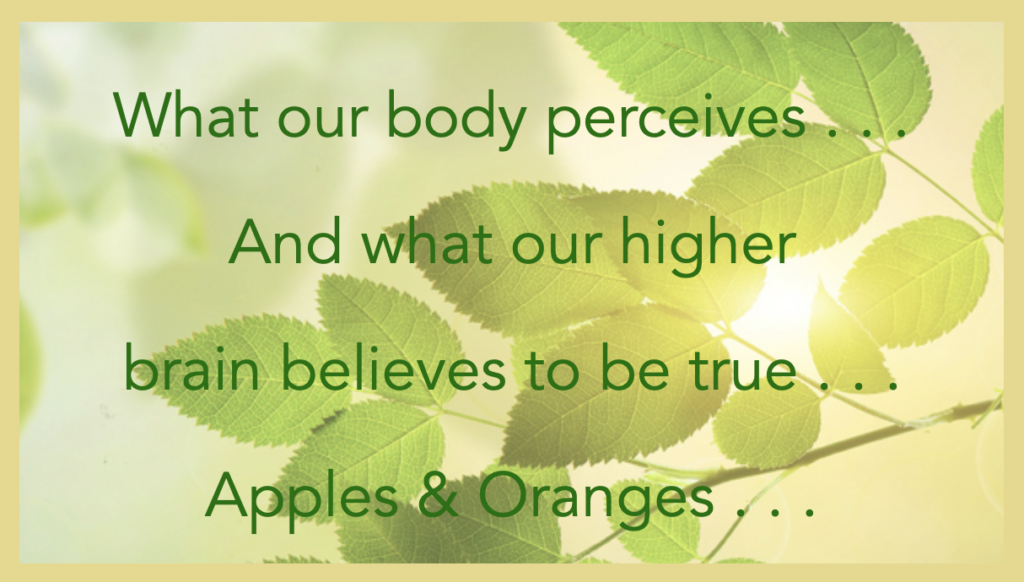
Following are some examples of common traumatic antecedents. Keep in mind, though, that any event can cause traumatic reactions later in life, depending on how the person experienced them at the time. It is not the event itself that is traumatic; it is the individual’s perception of and capacity to respond to the event. If one perceives a situation to be life-threatening, then that situation is potentially traumatic. So the following list is by no means exhaustive.
People, especially children, can be overwhelmed (and thus potentially traumatized) by what we usually regard as common everyday events (for example, falling off a bicycle). Or an infant may be left with caretakers that he or she does not know and sense that he or she has been abandoned. This event could lead to a traumatic response. That is, the infant may respond “as if” it had truly been abandoned. It may sense that its life is threatened, and respond accordingly.
Similarly, as Dr. Levine points out, hospitalizations and medical procedures routinely produce traumatic results. The traumatic after-effects from prolonged immobilization, hospitalizations, and especially surgeries are often long-lasting and severe.
Even though a person may recognize that an operation is necessary, and despite the fact that they are unconscious as the surgeon cuts through flesh, muscle, and bone, it still registers in the body as a life-threatening event. On a “cellular level”, the body perceives that is has sustained a wound serious enough to place it in mortal danger. Intellectually, we may believe in an operation, but on a more primal level, our bodies do not.

The Causes of shock trauma
according to Dr. Levine, can be divided into two main categories.
EVENTS THAT ARE ALMOST ALWAYS TRAUMATIC (i.e., perceived as overwhelming), no matter who experiences them, which might include:
- War
- Severe childhood emotional, physical, or sexual abuse
- Experiencing or witnessing violence
- Rape or assault of any kind
- Catastrophic injuries and illnesses
- Loss of a loved one
- High impact automobile accidents
COMMON JARRING, UNEXPECTED EVENTS that can be traumatic under certain circumstance, which might inclue:
- Minor automobile accidents, even fender-benders (especially those that cause whiplash)
- Invasive medical and dental procedures (particularly when performed on children who are restrained or anesthetized
- Falls and other so-called minor injuries, especially when children or elderly people are involved (for example, a child falling off a bicycle)
- Natural disasters (earthquakes, hurricanes, tornadoes, fires, floods, volcanoes)
- Illness, especially with high fever
- Accidental poisoning
- Abandonment (being left alone), especially for younger children and babies
- Prolonged immobilizations, especially for children (casting, splinting, traction)
- Exposure to extreme heat or cold (especially for children and babies)
- Sudden loud noises (especially for children and babies)
- Fetal trauma (intra-uterine)
- Birth trauma (e.g., umbilical cord getting wrapped around neck)
Continue exploring the topic of shock trauma
Main Page: Shock Trauma
Start with the basics: what everyone should know about shock trauma.
Symptoms
The first symptoms of trauma usually appear shortly after the event that engendered them. Others will develop over time.
Bodyworker Tips
"Red Lights" For Bodyworkers:
recognizing the signs of unresolved shock in the physiology
